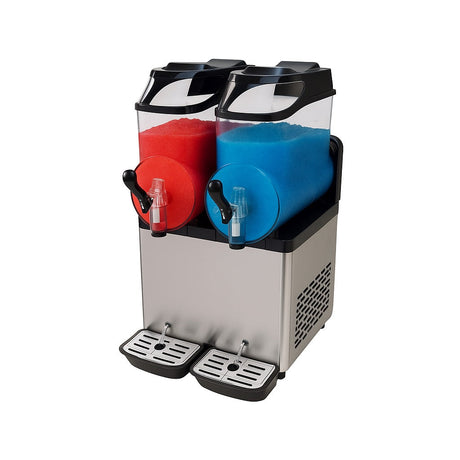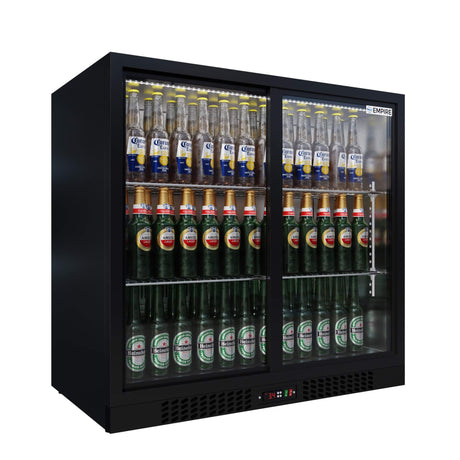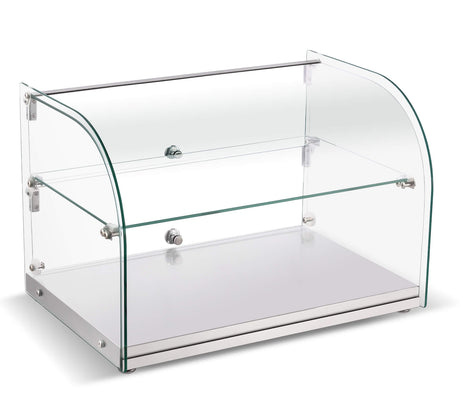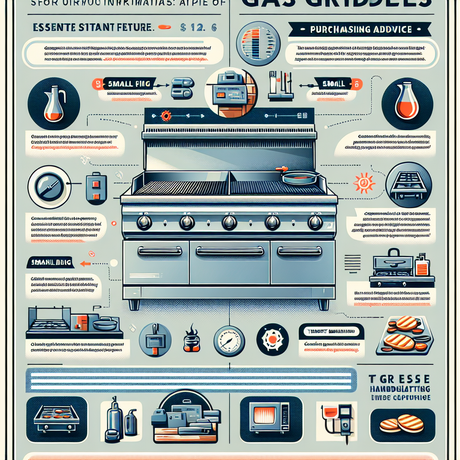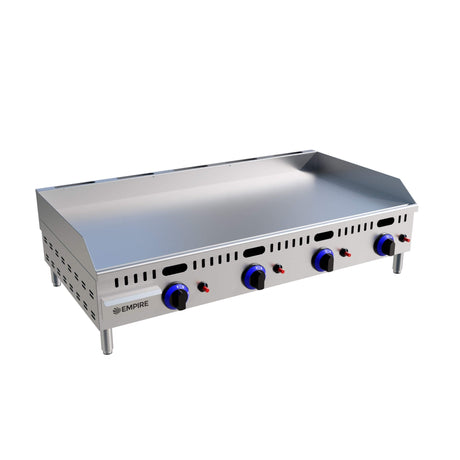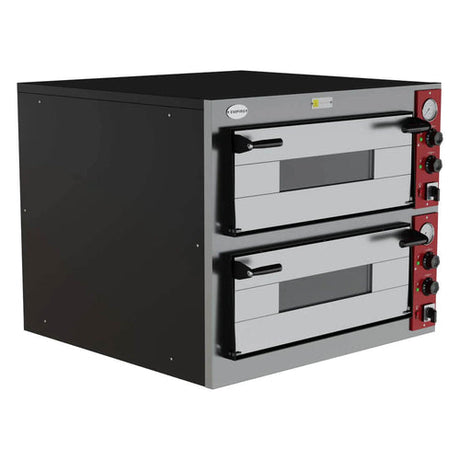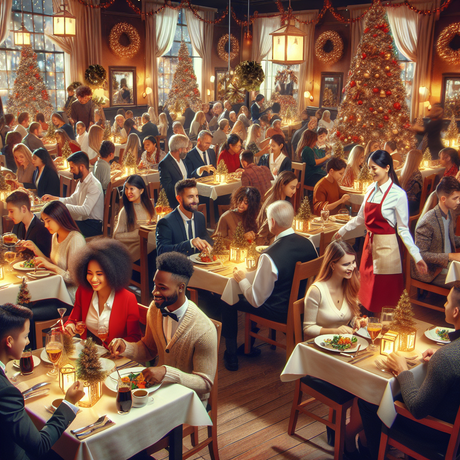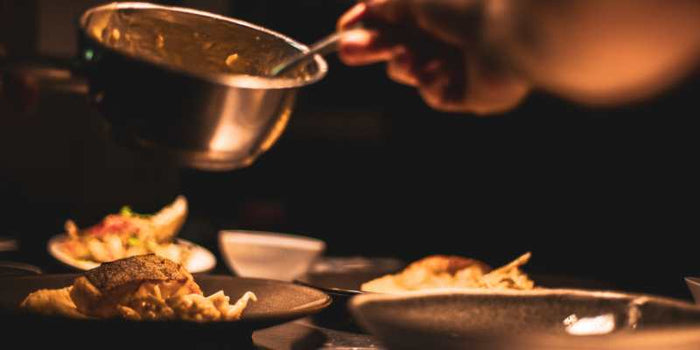Discover the key factors in selecting chef clothing for comfort, safety, and efficiency in a professional kitchen. Explore the importance of comfortable workwear, safety features, and maintaining style within uniform requirements.
Shaking the Chef's Wardrobe: Navigating the Art of Culinary Fashion
Discover our range of Chef's clothing here
What are the key factors to consider when selecting chef clothing?
As culinary professionals, chefs understand the importance of having the right attire to perform their duties effectively. From intricate knife work to managing the intense heat of the kitchen, the choice of chef clothing can significantly impact a chef's comfort, safety, and overall efficiency. When selecting chef apparel, there are several crucial factors to consider.
Functionality and Versatility
- Chefs' uniforms must be designed with practicality in mind, allowing for ease of movement and the ability to handle various tasks with ease.
- The clothing should be made from durable, stain-resistant fabrics that can withstand the demands of a busy kitchen environment.
- Versatility is key, as chefs may need to transition between different tasks and environments, from plating delicate dishes to handling hot equipment.
Safety and Protection
- Chef clothing should provide the necessary protection against potential hazards, such as hot surfaces, sharp implements, and spills.
- Features like flame-resistant fabrics, reinforced elbows and knees, and secure closures can help safeguard chefs in the kitchen.
- Proper footwear, such as slip-resistant, non-marking soles, is essential for maintaining stability and preventing accidents.
Comfort and Breathability
- Chefs often work in high-pressure, fast-paced environments, which can be physically demanding.
- Comfortable, breathable fabrics that wick moisture and allow for air circulation can help mitigate fatigue and keep chefs cool and focused during long shifts.
- Well-designed chef pants and jackets with adjustable features can accommodate a range of body types and ensure a snug, customized fit.
Why is it important for chefs to have comfortable and functional workwear?
The culinary profession is inherently physically demanding, requiring chefs to be on their feet for extended periods, handle heavy equipment, and perform intricate tasks with precision. Comfortable and functional workwear is not just a matter of personal preference; it is a crucial aspect of maintaining a chef's overall well-being and performance.
Increased Efficiency and Productivity
- When chefs are comfortable and unencumbered by their clothing, they can devote their full attention to the task at hand, leading to improved efficiency and higher-quality output.
- Functional workwear allows for seamless movement and dexterity, enabling chefs to execute complex techniques and plating with ease.
- Properly designed chef apparel can help reduce the risk of fatigue, allowing chefs to maintain their energy and focus throughout long shifts.
Improved Safety and Injury Prevention
- Well-designed chef clothing can provide the necessary protection against kitchen hazards, reducing the risk of burns, cuts, and other work-related injuries.
- Slip-resistant footwear and reinforced clothing can help prevent accidents and keep chefs safe in the dynamic kitchen environment.
- By minimizing the likelihood of injuries, chefs can maintain their physical well-being, which is crucial for a demanding profession.
Enhanced Morale and Job Satisfaction
- Comfortable and functional workwear can contribute to a chef's overall job satisfaction and sense of pride in their profession.
- When chefs feel confident and comfortable in their attire, it can boost their morale and motivation, leading to a more positive work environment.
- Investing in quality chef clothing can demonstrate an employer's commitment to the well-being and professional development of their culinary staff.
How can chefs maintain a sense of style while adhering to uniform requirements?
While the primary function of chef clothing is to provide functionality and safety, many chefs also strive to maintain a sense of style and personal expression within the constraints of their uniforms. Navigating the balance between practical requirements and fashionable flair can be a rewarding challenge.
Customization and Personalization
- Many chef clothing manufacturers offer a range of customization options, allowing chefs to incorporate personal touches and unique design elements.
- Subtle modifications, such as embroidered logos, custom button colors, or personalized name tags, can help chefs infuse their individual style while still adhering to uniform standards.
- Accessorizing with items like stylish aprons, neck ties, or personalized knife bags can also be a way for chefs to express their creativity and flair.
Exploring Fabric and Silhouette Choices
- Even within the confines of traditional chef uniforms, there is room for chefs to explore different fabric textures, patterns, and silhouettes that complement their personal aesthetic.
- Selecting chef jackets with modern cuts, tailored fits, or subtle design elements can help chefs feel more confident and comfortable in their attire.
- Experimenting with different sleeve lengths, collar styles, or button placements can allow chefs to put their own spin on the classic chef's uniform.
Cultivating a Cohesive Brand Image
- For chefs working in high-end or specialty establishments, maintaining a cohesive brand image through their uniform can be an important consideration.
- Coordinating their chef's attire with the overall aesthetic and branding of the restaurant can help chefs feel like a seamless extension of the culinary experience.
- This level of attention to detail can also contribute to a more polished and professional appearance, which can be valuable in creating a memorable dining experience for customers.
Striking the perfect balance between functionality, safety, and personal style in chef clothing is an ongoing pursuit, but one that can reap significant rewards. By carefully considering the key factors and exploring creative avenues for customization and self-expression, chefs can elevate their culinary wardrobes to reflect their unique personalities and culinary passions, all while ensuring the highest standards of professionalism and efficiency in the kitchen.
The Versatility of Aprons in Professional Kitchens
The Different Types of Aprons and Their Uses
Aprons are an essential part of any professional kitchen, serving as both a functional and stylistic element. These garments come in a variety of styles, each designed to cater to the specific needs of different kitchen roles and tasks.
The Humble Bib Apron
- Bib aprons are the most common type, covering the front of the body from the chest to the thighs.
- They provide a practical barrier against spills, splatters, and stains, protecting the chef's clothing.
- Bib aprons come in a range of fabrics, from durable cotton to water-resistant polyester, allowing for versatility in different kitchen environments.
The Versatile Waist Apron
- Waist aprons, also known as half aprons, cover only the lower half of the body, from the waist to the thighs.
- These are popular among servers, bartenders, and pastry chefs who need freedom of movement in the upper body.
- Waist aprons often feature pockets for storing essential tools, making them a practical choice for multitasking roles.
The Specialized Butcher's Apron
- Butcher's aprons are designed to provide maximum protection for those working with meat and poultry.
- Featuring a longer length that covers the body from the chest to the knees, these aprons offer increased coverage against blood, fat, and other messy byproducts.
- The thick, durable fabric of butcher's aprons is often made from materials like PVC or leather, ensuring long-lasting protection.
The Role of Aprons in Maintaining Cleanliness and Hygiene
Aprons play a crucial role in upholding cleanliness and hygiene standards within a professional kitchen. By acting as a barrier between the chef's clothing and the food preparation area, aprons help prevent the spread of contaminants and keep the workspace clean.
Protecting Against Cross-Contamination
- Aprons create a physical separation between the chef's personal attire and the food preparation surfaces, reducing the risk of transferring bacteria, allergens, or other unwanted substances from one to the other.
- This is especially important when handling raw meats, seafood, or other potentially hazardous ingredients that could lead to cross-contamination if not properly contained.
Maintaining a Tidy Appearance
- A well-fitting, clean apron helps maintain a professional and hygienic appearance in the kitchen, which is crucial for both food safety and customer perception.
- Chefs and kitchen staff can easily discard and replace soiled aprons, ensuring a consistently neat and organized work environment.
Compliance with Regulatory Standards
- Many health and safety regulations require the use of aprons in commercial kitchens to meet food hygiene standards.
- Wearing the appropriate apron for the task at hand demonstrates a commitment to following established protocols and ensures compliance with industry guidelines.
Specialized Aprons for Different Kitchen Roles
While the basic bib and waist aprons are versatile and widely used, there are also specialized aprons designed to cater to the unique needs of specific kitchen roles and tasks.
Chef's Aprons for Culinary Professionals
- Chef's aprons often feature a longer length that covers the entire front of the body, providing enhanced protection for those involved in extensive food preparation.
- Many chef's aprons also incorporate features like adjustable neck straps, multiple pockets, and reinforced fabric in high-wear areas, making them well-suited for the demands of a busy kitchen.
Server Aprons for Front-of-House Staff
- Server aprons are typically more stylish and lightweight than their kitchen counterparts, as they need to maintain a professional appearance while allowing for greater mobility.
- These aprons may feature decorative elements, such as embroidery or contrasting trim, to complement the restaurant's uniform and branding.
Specialty Aprons for Specific Tasks
- Certain kitchen tasks, such as butchery or hot food service, may require specialized aprons that offer additional protection, such as heat-resistant materials or reinforced stitching.
- These task-specific aprons help ensure the safety and well-being of the kitchen staff while they perform their duties.
Aprons are a fundamental component of any well-equipped professional kitchen, serving as both a functional and aesthetic element. By understanding the different types of aprons and their unique applications, chefs and kitchen managers can ensure that their team is properly outfitted to maintain the highest standards of cleanliness, hygiene, and safety, all while contributing to the overall efficiency and professionalism of the kitchen operation.
The Importance of Proper Footwear for Kitchen Professionals
Why is it Crucial for Kitchen Staff to Wear Slip-Resistant and Durable Footwear?
The kitchen environment is a fast-paced, high-intensity workplace that demands unwavering attention to safety and efficiency. One of the critical aspects of ensuring a safe and productive kitchen is the footwear worn by the staff. Investing in the right kind of slip-resistant and durable footwear can make all the difference in preventing accidents and maintaining the overall well-being of kitchen professionals.
Slip-Resistant Footwear: A Necessity in the Kitchen
- Kitchens are notoriously slippery environments, with spills, wet floors, and constant foot traffic creating a hazardous situation.
- Wearing slip-resistant footwear with specialized treads and soles can significantly reduce the risk of slips and falls, which are among the leading causes of workplace injuries in the culinary industry.
- Preventing such incidents not only safeguards the well-being of the staff but also protects the business from potential legal and financial liabilities.
Durability: Withstanding the Rigors of the Kitchen
- The kitchen environment is demanding, with staff often standing for long hours and facing constant exposure to water, heat, and other potential sources of wear and tear.
- Durable footwear that can withstand the rigors of the kitchen is essential to ensure long-lasting comfort and support for the wearer.
- High-quality, well-constructed shoes can provide the necessary protection and cushioning to help kitchen staff maintain their energy and focus throughout their shifts.
Investing in the Right Footwear: A Smart Business Decision
- Providing kitchen staff with appropriate slip-resistant and durable footwear is not only a matter of safety but also a strategic business decision.
- Properly outfitted staff are less likely to experience work-related injuries, leading to reduced absenteeism, increased productivity, and a healthier overall workforce.
- In the long run, the cost of investing in quality footwear is far outweighed by the benefits of a safer, more efficient, and more satisfied kitchen team.
Prioritizing the right footwear for kitchen professionals is a crucial step in creating a safe, comfortable, and productive work environment. By investing in slip-resistant and durable shoes, businesses can not only protect their staff but also strengthen the overall operational efficiency and success of their culinary operations.
What are the Features to Look for in Kitchen Footwear to Ensure Comfort During Long Hours of Standing?
As kitchen professionals often spend long hours on their feet, the comfort and support provided by their footwear become paramount. Identifying the key features to look for in kitchen-specific footwear can help ensure that staff are able to maintain their energy and focus throughout their shifts.
Cushioning and Arch Support
- Kitchen staff require footwear with ample cushioning in the soles to absorb the impact of standing and walking for extended periods.
- Proper arch support is also essential to prevent foot, ankle, and leg fatigue, which can lead to discomfort and reduced mobility.
- Well-designed, ergonomic shoes with advanced cushioning and arch support can significantly enhance the overall comfort and well-being of kitchen professionals.
Breathability and Moisture Wicking
- The hot and humid environment of a kitchen can lead to sweating and moisture buildup, which can contribute to discomfort and the formation of blisters.
- Footwear with breathable materials and moisture-wicking properties can help keep the feet dry and comfortable, even during the most intense shifts.
- This feature not only enhances the physical comfort of the wearer but also helps maintain proper hygiene and prevent the growth of bacteria or fungus.
Lightweight and Flexible Construction
- Kitchen staff often need to move quickly and efficiently, requiring footwear that is lightweight and flexible to accommodate their dynamic movements.
- Shoes with a lightweight construction and flexible soles can help reduce fatigue and improve the overall agility and responsiveness of the wearer.
- This feature is particularly important for tasks that involve frequent bending, crouching, or navigating tight spaces in the kitchen.
Slip-Resistant Outsoles
- As mentioned earlier, slip-resistant outsoles are a crucial feature for kitchen footwear, providing essential traction and stability on wet or slippery surfaces.
- Shoes with specialized treads and rubber outsoles can help prevent slips and falls, which are common hazards in the kitchen environment.
- This feature not only enhances safety but also contributes to the overall confidence and efficiency of the kitchen staff as they move around the workspace.
By prioritizing features like cushioning, breathability, lightweight construction, and slip-resistance, kitchen professionals can find footwear that provides the necessary comfort, support, and safety to thrive in their demanding work environment. Investing in high-quality, kitchen-specific footwear can be a game-changer in maintaining the well-being and productivity of the culinary team.
How Do Brands Like Birkenstock and Crocs Provide Stylish Footwear Options for Kitchen Professionals?
While functionality and safety are the primary considerations for kitchen footwear, professionals in the culinary industry also desire footwear that offers a touch of style and personality. Brands like Birkenstock and Crocs have recognized this need and have developed innovative solutions that cater to the unique requirements of kitchen staff.
Birkenstock: Comfort and Sophistication
- Birkenstock, renowned for its ergonomic and anatomically-shaped footbeds, has introduced a range of kitchen-friendly shoes that combine their signature comfort with a sleek, professional aesthetic.
- Their Profi Birki line, for example, features slip-resistant outsoles, water-resistant uppers, and lightweight, flexible construction – all while maintaining the brand's signature orthopedic support and classic silhouettes.
- The versatility of Birkenstock's kitchen-specific offerings allows kitchen professionals to express their personal style while prioritizing the functional needs of their work environment.
Crocs: Practical and Playful
- Crocs, a brand often associated with casual and comfortable footwear, has also made significant strides in the kitchen footwear market.
- Their Crocs for Work line features a range of slip-resistant, water-friendly, and odor-resistant options that are designed to withstand the rigors of the kitchen.
- What sets Crocs apart is their ability to infuse a sense of playfulness and individuality into their kitchen-oriented designs, with a variety of vibrant colors and patterns that allow staff to showcase their personality.
- The lightweight and easy-to-clean nature of Crocs' kitchen-specific models make them a popular choice among chefs and kitchen staff who value both functionality and self-expression.
Customization and Personalization
- Beyond the branded offerings, some kitchen professionals have taken it upon themselves to personalize and customize their footwear to reflect their unique style and preferences.
- From adding colorful laces or patches to their shoes to seeking out limited-edition or collaboratively-designed kitchen-focused footwear, these customizations allow kitchen staff to stand out and showcase their individual flair.
- This trend not only enhances the overall aesthetic of the kitchen but also helps foster a sense of pride and ownership among the culinary team, further strengthening their commitment to their work.
Brands like Birkenstock and Crocs have recognized the need for kitchen-specific footwear that not only prioritizes functionality but also caters to the personal style preferences of culinary professionals. By offering a range of stylish and practical options, these brands are helping kitchen staff find the perfect balance between safety, comfort, and self-expression – a crucial element in maintaining a motivated, engaged, and visually cohesive culinary team.
Q&A
What are the key factors to consider when selecting chef clothing?
When selecting chef clothing, factors like functionality, safety, protection, comfort, and breathability are crucial. The clothing should be durable, stain-resistant, and versatile to handle the demands of a busy kitchen environment.
Why is it important for chefs to have comfortable and functional workwear?
Comfortable and functional workwear is essential for chefs to enhance efficiency, productivity, safety, and overall job satisfaction. It can improve performance, prevent injuries, and boost morale in the demanding culinary profession.
How can chefs maintain a sense of style while adhering to uniform requirements?
Chefs can maintain style by customizing and personalizing their chef clothing, exploring different fabric choices and silhouettes, and cultivating a cohesive brand image. Personal touches, unique designs, and coordinated attire can help chefs express their creativity while adhering to uniform standards.
What are the different types of aprons and their uses in professional kitchens?
Aprons come in various types like bib aprons, waist aprons, and butcher's aprons, each serving specific needs in the kitchen. They act as barriers against spills, maintain cleanliness, and comply with hygiene standards while catering to different kitchen roles and tasks.
Why are slip-resistant and durable footwear crucial for kitchen staff?
Slip-resistant and durable footwear is essential in the kitchen to prevent accidents, injuries, and ensure a safe work environment. It provides necessary traction on slippery floors, withstands harsh kitchen conditions, and contributes to the overall efficiency and well-being of kitchen professionals.
What features should kitchen footwear have for comfort during long hours of standing?
Kitchen footwear should have features like cushioning, arch support, breathability, moisture-wicking, lightweight construction, and slip-resistant outsoles for comfort during long hours of standing. These features ensure proper support, hygiene, agility, and safety while maintaining the well-being of kitchen staff.
How do brands like Birkenstock and Crocs provide stylish footwear options for kitchen professionals?
Brands like Birkenstock and Crocs offer stylish footwear options for kitchen professionals that prioritize functionality and personal style. Birkenstock combines comfort and sophistication with slip-resistant designs, while Crocs infuse practicality and playfulness into their kitchen-specific footwear, allowing staff to showcase individuality while ensuring safety and comfort.
Master the art of selecting chef clothing, maintaining comfort and safety in the kitchen. Dive into the world of stylish aprons and explore the significance of slip-resistant and durable footwear for kitchen professionals.



